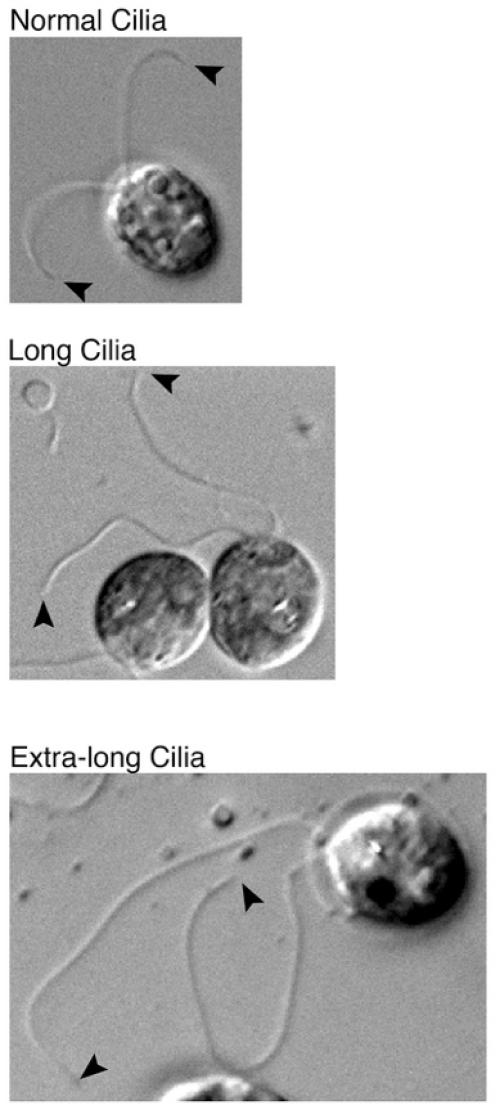西蒙·弗雷泽大学发现基因缺陷会导致细胞纤毛过长
加拿大西蒙·弗雷泽大学的研究人员通过对绿藻研究发现,无论CNK2和LF4基因的哪一个发生缺陷都可使纤毛变得过长,而当触须尺寸不正常时,其捕获的信号就会被误读,从而造成致命后果。相关文章发表于2013年10月31日的《Current biology》杂志上。

西蒙·弗雷泽大学发现基因缺陷会导致细胞纤毛过长
纤毛是指人体细胞上极其微小的触须。
西蒙·弗雷泽大学分子生物学家林恩·考姆比表示,调控基因CNK2存在于纤毛之中,并控制着这些毛发状突出物的长度。这一发现很重要,因为纤毛或鞭毛悬挂在人体的所有细胞之上。它们具有驱动精子细胞这样的能力,也允许在其他细胞间进行分子通信,如分子对激素作出反应,来决定人体胚胎的发育及形成成年期的功能。
纤毛太短或太长,都会导致各种人类遗传疾病和畸形,比如过多的手指或脚趾、失明和多囊性肾病。
所有细胞生命周期中的一个关键部分是细胞分裂及装配前其纤毛的拆装。基因LF4是一个已知装配调节器,在之前的研究中,科学家们认为装配速度控制纤毛伸长或收缩的最终长度。
考姆比的最新研究发现,卸装速度也很重要,调控基因CNK2在其中起着关键的控制作用。与水压和重力之间的平衡决定喷泉的高度相类似,组装和卸装的平衡速度决定纤毛的长度。在伸长和收缩同时发生的情形下,纤毛长度保持不变。
绿藻研究发现,无论CNK2和LF4基因的哪一个发生缺陷,纤毛就会长得异常长。它们会创建出四纤毛藻类细胞,而不是正常的两个,另外两个正是藻类发绿的根由。研究人员接下来将会研究这些纤毛是如何影响疾病进程的。
原文摘要:
The Kinases LF4 and CNK2 Control Ciliary Length by Feedback Regulation of Assembly and Disassembly Rates
Laura K. Hilton,Kavisha Gunawardane,Joo Wan Kim,Marianne C. Schwarz,Lynne M. Quarmby
Background
Many of the diverse functions of cilia depend upon tight control of their length. Steady-state length reflects a balance between rates of ciliary assembly and disassembly, two parameters likely controlled by a length sensor of unknown identity or mechanism.
Results
A null mutation in Chlamydomonas CNK2, a member of the evolutionarily conserved family of NIMA-related kinases, reveals feedback regulation of assembly and disassembly rates. cnk2-1 mutant cells have a mild long-flagella (lf) phenotype as a consequence of reduced rates of flagellar disassembly. This is in contrast to the strong lf mutant lf4-7, which exhibits an aberrantly high rate of assembly. Cells carrying both mutations have even longer flagella than lf4-7 single mutants do. In addition to their high rate of assembly, lf4-7 mutants have a CNK2-dependent increase in disassembly rate. Finally, cnk2-1 cells have a decreased rate of turnover of flagellar subunits at the tip of the flagellum, demonstrating that the effects on disassembly are compensated by a reduced rate of assembly.
Conclusions
We propose a model wherein CNK2 and LF4 modulate rates of disassembly and assembly respectively in a feedback loop that is activated when flagella exceed optimal length.

